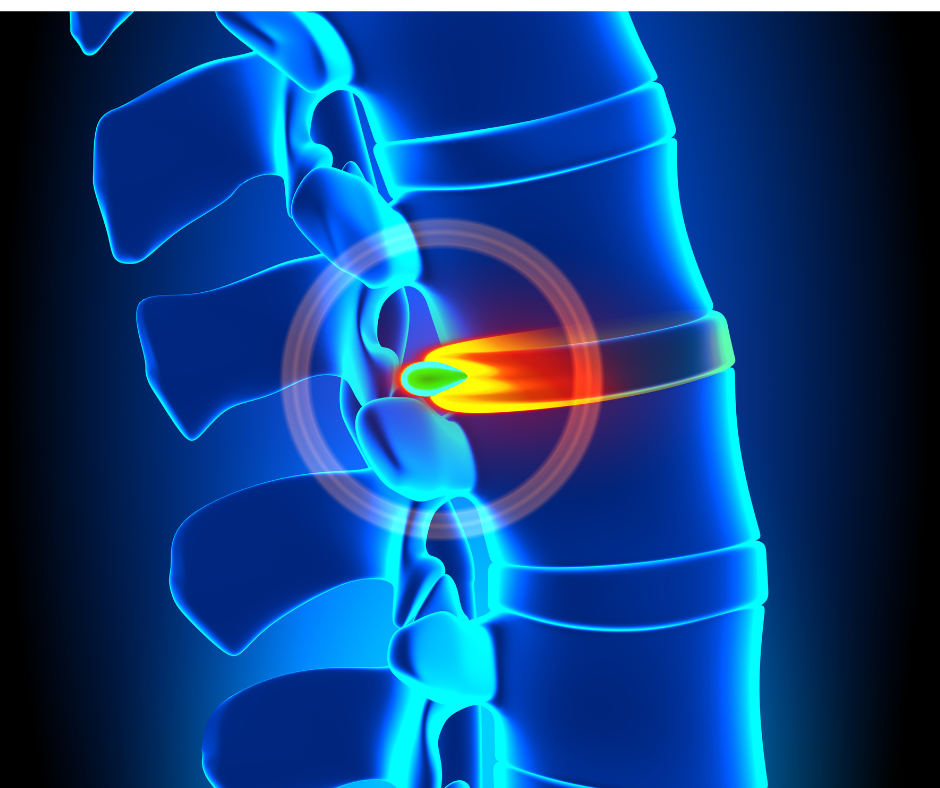VAX-D Spinal Decompression Therapy
Are you searching for non-invasive back pain relief without surgery? At Aligned Medical Group, we specialize in VAX-D spinal decompression therapy, a non-surgical spinal decompression treatment designed to alleviate chronic back pain and improve mobility. Whether you’re struggling with herniated discs, sciatica, or degenerative disc disease, VAX-D can help.
“I believe that anyone with a herniated or degenerated disc should try Spinal Decompression first, before surgery.” – Robert Channey, M.D. Former Assistant Surgeon General of the United States
What is VAX-D and How Does It Work?
VAX-D, short for Vertebral Axial Decompression, is an FDA-approved method that reduces spinal pressure and promotes the healing of damaged discs. VAX-D gently stretches the spine, creating a vacuum effect within the disc. This in turn helps to restore nutritive and lubricated fluids along with oxygen into dried disc tissue, rehydrating and repairing damaged discs. The therapy is relaxing and most patients fall asleep during treatments.
This advanced treatment is ideal for individuals experiencing:
- Herniated or bulging discs
- Sciatica and nerve pain
- Degenerative disc disease
- Chronic lower back pain
- Facet syndrome
- Work-related Injuries
- Sports-related Injuries
- Post Surgical Patients
VAX-D is a drug-free and non-invasive solution that restores spinal health naturally without the need for surgery or medications.

Who Can Benefit From VAX-D Treatment?
VAX-D is suitable for many individuals suffering from chronic back pain and disc-related issues, especially those who:
- Severe or chronic lower back pain
- Severe or chronic neck pain
- Pinched nerves
- Sciatica
- Degenerative disc disease
- Herniated discs
- Bulging discs
- Protruded discs
- Disc tears
- Numbness
- Tingling or burning pain
- Weakness in the arms or legs
- Sharp or shooting pain
- Facet syndrome
- Spinal stenosis
- Failed back surgery
Our team of professionals will conduct a thorough evaluation to determine if VAX-D therapy is right for your specific condition.

What is the Procedure for VAX-D Spinal Decompression Therapy?
VAX-D therapy is a non-surgical treatment designed to relieve chronic and acute back pain. Here’s what you can expect during the process:
- Initial Assessment
We will review your medical history, perform a physical exam, and use diagnostic imaging to determine if you’re a suitable candidate. This ensures an accurate diagnosis of conditions like herniated discs or sciatica.
- Preparation
You’ll lie comfortably on the VAX-D table, with a gentle harness securing your pelvis to maintain alignment and stability during treatment.
- Controlled Spinal Decompression
The computer-controlled system applies precise cycles of decompression and relaxation to your spine. This relieves pressure on the spinal discs and nerves, creating a negative pressure effect that helps retract bulging or herniated discs.
- Healing in Action
Controlled decompression improves blood flow and promotes the retraction of herniated or bulging discs, relieving pressure on spinal nerves, supporting natural healing. Many patients notice pain relief and improved mobility after just a few sessions.
- Treatment Duration and Frequency
Each session lasts 30–45 minutes. Most plans involve 3 sessions per week for 6–8 weeks, tailored to your condition and goals.
- Post-Treatment Care
After treatment, light physical activity, hydration, and lifestyle adjustments are recommended to support recovery. Using a back brace or neck support may also aid healing.
By following this tailored treatment plan, VAX-D therapy provides effective non-surgical back pain relief, helping improve spinal health and enhancing your quality of life.
Why Choose Aligned Medical Group For VAX-D Treatment?
At Aligned Medical Group, we are committed to helping you achieve pain relief and a better quality of life. Here’s why our patients trust us:
- Experienced Practitioners: Our chiropractors are certified and have years of expertise in non-surgical treatments.
- State-of-the-Art Technology: We use advanced equipment for accurate, effective treatments.
- Personalized Care Plans: Each treatment is tailored to meet your individual needs and goals.
- Compassionate Team: Our dedicated professionals ensure your comfort throughout the process.
What are the Benefits of VAX-D Spinal Decompression Therapy
- Effective Relief for Chronic Back and Neck Pain
VAX-D therapy addresses the root cause of discomfort by targeting spinal discs. It relieves pressure, decompresses pinched nerves, and reduces pain, improving mobility and enhancing your quality of life.
- Non-Invasive and Drug-Free Treatment
VAX-D therapy is a safe, non-surgical solution that avoids the risks associated with surgery and medications. It provides a natural path to pain relief without incisions or reliance on drugs.
- Customizable Treatment Plans
Each VAX-D session is tailored to your specific needs, ensuring optimal results for conditions like herniated discs, sciatica, and degenerative disc disease.
- Improved Spine Health and Function
This therapy promotes spinal alignment, increases disc space, and improves circulation. It helps retract herniated discs and supports long-term spinal health.
- Quick Recovery Times
Unlike surgery, VAX-D therapy allows for a faster return to daily activities with minimal downtime. Many patients report reduced pain and improved mobility within just a few sessions.
By combining non-invasive, drug-free care with personalized treatment plans, VAX-D therapy effectively restores spinal health and function, helping you achieve pain relief and improved quality of life.
Common Questions about Vax-D Spinal Decompression Therapy
Does Insurance Cover VAX-D Spinal Decompression Therapy?
Insurance coverage for VAX-D Spinal Decompression Therapy varies by provider and individual policy. Some insurers may cover the treatment, while others may not. Contact Aligned Medical to determine if your insurance plan covers the treatment. We’ll assist in verifying your coverage and discuss available options.
Is VAX-D Therapy Safe & Effective?
Yes, VAX-D therapy is FDA-approved and has been used safely for years. Spinal decompression therapy is currently considered one of the safest and most effective procedures available today, especially when compared to medications and surgery.
How Many Sessions of Spinal Decompression Therapy Will I Need?
Most patients undergo 15-25 sessions for optimal results, depending on the severity of the condition. We will work with you to develop a treatment plan suited to your needs.
How Much Is VAX-D Spinal Decompression Therapy?
The cost of VAX-D Spinal Decompression Therapy can differ based on the severity of your condition and the treatment plan we’ll design for you. Factors like the number of sessions and your individual health goals can affect the total cost. For a more accurate estimate, schedule a free consultation with our team of experts.
How Long Does Spinal Decompression Therapy Take?
You should plan to set aside 60 minutes for your treatments. The length of spinal decompression therapy depends on the severity and chronicity of your condition along with many individual contributing factors. Most of our patients are here for 8 weeks of care.
What are My Chances of Success with Spinal Decompression Therapy?
Your chances of success are very high because we only accept patients we truly believe we can help. We will be as specific as possible with you regarding your prognosis at your free consultation. Studies show the success rates averaging 70-86%.
Do I Need Follow-Up Care After Completing My Spinal Decompression Therapy?
For most patients, follow-up care is not necessary after completing Spinal Decompression Therapy. When you finish your decompression program, the healing is complete. In addition, we develop an easy-to-follow home exercise program for you to use after your therapy ends. For more severe cases, you may want to see us for supportive treatment every 1-2 months.
I Had Surgery And It Did Not Help. Can I Still Do Spinal Decompression Therapy?
We may be able to treat you after surgery, depending upon the nature of the procedure performed As a matter of fact, patients diagnosed with “failed back surgery” typically respond very well to non-surgical spinal decompression therapy. We will need to evaluate your post-surgical diagnostic studies and consult with your surgeon to determine the best treatment plan for you.
Read Our Featured Articles
Is Your Work From Home Job Causing Chronic Pain?
Many work from home jobs are vital in keeping our modern world moving. Unfortunately, they aren’t ideal for our physical wellbeing. Many jobs like an administrative specialist, office manager, project manager, IT support, medical office assistant, customer service...
How to Travel with Sciatica: Expert Tips for Pain-Free Trips
When your sciatica nerve gets irritated, compressed, or inflamed, it can cause sharp, shooting pains, tingling or numbness. You’ll feel the pain along the nerve anywhere from the lower back, through your hips, buttocks or legs. When you have a history of sciatica...
When to Consider Surgery for Sciatica
Surgery for sciatica pain may be considered when other treatments fail to provide relief, or when specific severe sciatica symptoms are present. For example, when symptoms persist or worsen when the patient has undergone treatments regiments such as physical therapy,...
Office Hours
- Monday: 8:30 AM - 7:00 PM
- Tuesday: 8:30 AM - 1:30 PM
- Wednesday: 8:30 AM - 6:00 PM
- Thursday: 2:00 PM - 7:00 PM
- Friday: 8:30 AM - 1:30 PM
*Call if you would like a time outside our normal hours, and we'll do our best to accommodate you*



